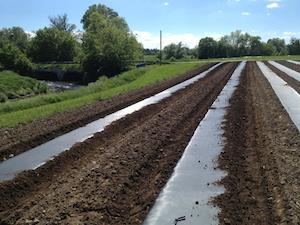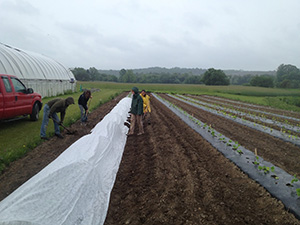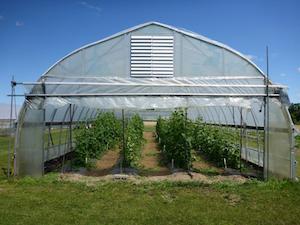Management Solutions

The Issue
No two farms are the same and over the last few years we have observed a wide variety of growing techniques used by various farmers to overcome the environmental and economic challenges they face. We are working to determine effective growing strategies that are most conducive to farming practices and the climate trends of the eastern United States.
Customers generally choose the highest, most consistent quality product with the best price they can find. Many times this includes produce from across the country or across the globe. If eastern United States growers cannot provide a consistent, quality product, they will not be able to compete, leaving local produce off of our shelves. Cucurbits, such as cucumbers, squash and melon are common crops that consumers, like us, expect to see at local stores and markets, but more farmers are having trouble getting these from the farm to the market and eventually our tables.
What Eso-cuc is doing to help me?
We are performing a comparative study using three different growing techniques farmers commonly use to grow cucurbits:
- Open field, in which crops are planted into a field with black plastic mulch to prevent weed competition and are irrigated as needed.
- Row cover, in which these crops are given an added blanket-like layer of protection for a few weeks while they are young and most vulnerable to pests.
- Finally, high tunnel/greenhouse, a large standing structure that provides added protection from pests, a controlled climate as well as a trellis system for easier picking.
The purpose of running all three is to compare how each portion reacts to pest and disease pressures and to determine if the economic return through yield and marketability measurements outweighs the cost of labor required.
OpenField

This is the practice with the least labor, the least protection and what we have found so far in year one, the crops with the most susceptibility to pest pressures and lowest marketable yield.
With no added covering, the open field plants are more vulnerable to the harsh spring winds and rains leaving many of the young transplants with split stems or completely eaten by Striped Cucumber Beetles. They have been slower to fruit and those plants that have survived, produced fewer marketable fruit.
Row Cover

We use Agribon, a material that creates a micro-climate/greenhouse effect in that it allows around 90% of the UV light in, while preventing much of the heat from escaping early in the season. This is great for season extension for growing into the colder months and starting earlier in the spring as we have seen with our cucumbers, squash and melon.
The row cover stays on about 2 1/2 weeks for cucumbers and squash and about 3 to 4 weeks for melons. This all depends on the outside temperatures and moisture. After the plant establishes itself, but before female flowers begin to open, we ideally remove the row cover, allowing pollinators uninhibited access to the fruit as well as providing space for the vines to sprawl.
High Tunnel

The high tunnel is very different from the other two options because the amount of labor increases, but also because the environment is more intensely controlled i.e. complete irrigation control, temperature adjustments through roll-up sides and end-walls, and wind reduction.
In the open field we added no additional labor, in the row cover section, we added the placement and removal of Agribon, the high tunnel involves weekly pruning and trellising. Nevertheless, in year one, the fruit quality is more marketable than the other two strategies. The added warmth and protection offered earlier fruit production in the high tunnel as well.
All plants are seeded and transplanted on the same date, but at various stages you can see how different their growth patterns are depending on what management strategy is being used.
Results
In year one, the covered plants have proven stronger than their uncovered counterparts.
Keep checking in with us as we update the results of our findings from these various management strategies.
Our Sponsors

Grant number: 2012-51300-20006
